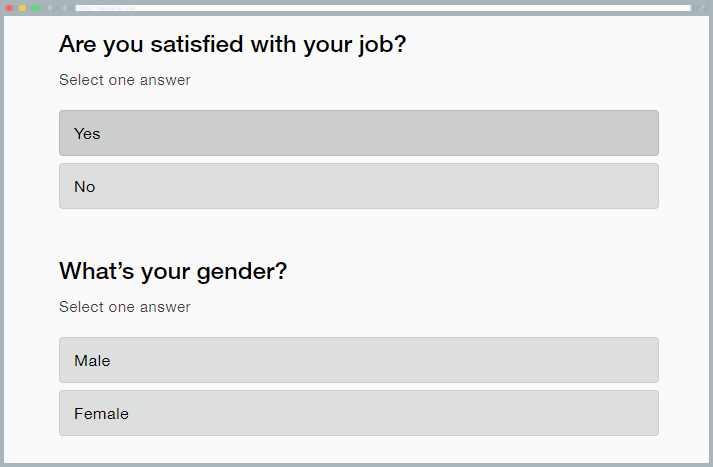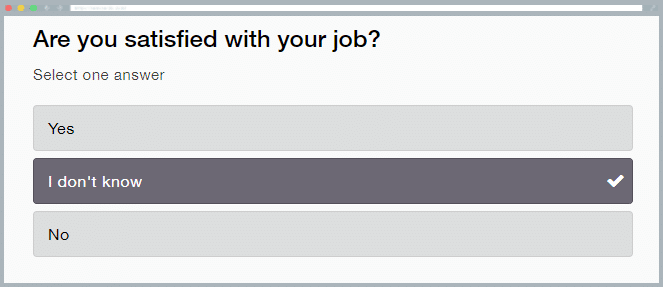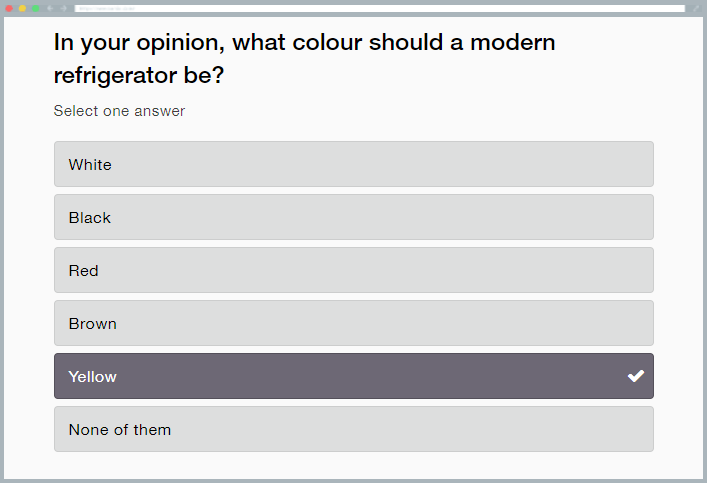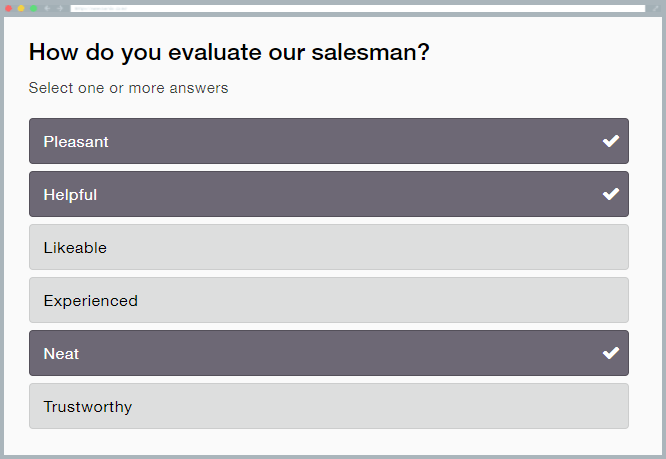Question types 1: Closed-ended questions
A new series is here to help you navigate amongst the types and kinds of questions that can be used in your surveys, and to tell you how and where to use these question types.
Closed-ended questions
This is the most used type of question in questionnaires, in which the respondent selects one or more pre-prepared answers. Thanks to their unambiguousness and simple construction, it is very easy to process them automatically, quickly and efficiently, in any type of research.
Closed-ended questions are therefore useful in areas where you need to describe a fixed range of answers.
| + Advantages | – Disadvantages |
| Easy and quick to fill in | Diffucutĺties with formulating the question and its answer options |
| Easy to process and evaluate the answers | Not appropriate for questions with a big number of answer options |
| Pulling the respondent into the problem of the question | Forced answers (impossibility to offer the respondent their own choice) |
| High probability of completion | Respondent’s answers can get skewed |
Dichotomous and trichotomous questions
These questions are suitable for distinguishing amongst just two or three options and are thus the easiest question types for respondents as well as for researchers to evaluate.
For a trichotomous question, a neutral answer is usually added to the dichotomous alternative. We choose this type of question if we feel that the respondent could have difficulty determining a clear answer.
Example of a dichotomous question:
Example of a trichotomous question:
Polytomous questions
These are questions that offer respondents more than three options to choose from and can be created as selective or enumerated. In practice, we also often encounter the use of the terms “single choice” and “multiple choice”. You can even come across the concepts of “selective” and “alternative questions”, which, again, describe the same concept.
| single choice | multiple choice |
| selective | enumerated |
| selective | alternative |
| one answer | multiple answers |
In a selective question, the respondent selects only one answer, in order to obtain a clear answer. An enumerated question offers the respondent an opportunity to choose one or more answers and is thus suitable for describing a certain area.
Example of a selective question:
Example of a enumerated question:
In the next part, we will focus on a very popular type of question appearing in many surveys around the world – the Likert scale.
Stay tuned & follow us! Share your questions, ideas or comments with us on Facebook, Twitter or via e-mail!
Create your own questionnaire or survey for free
Setting up your first survey is quick and straight forward. Choose from one of 100 predefined templates or create your own from the scratch. Start getting your first responses in 5 minutes.
Create your own survey








